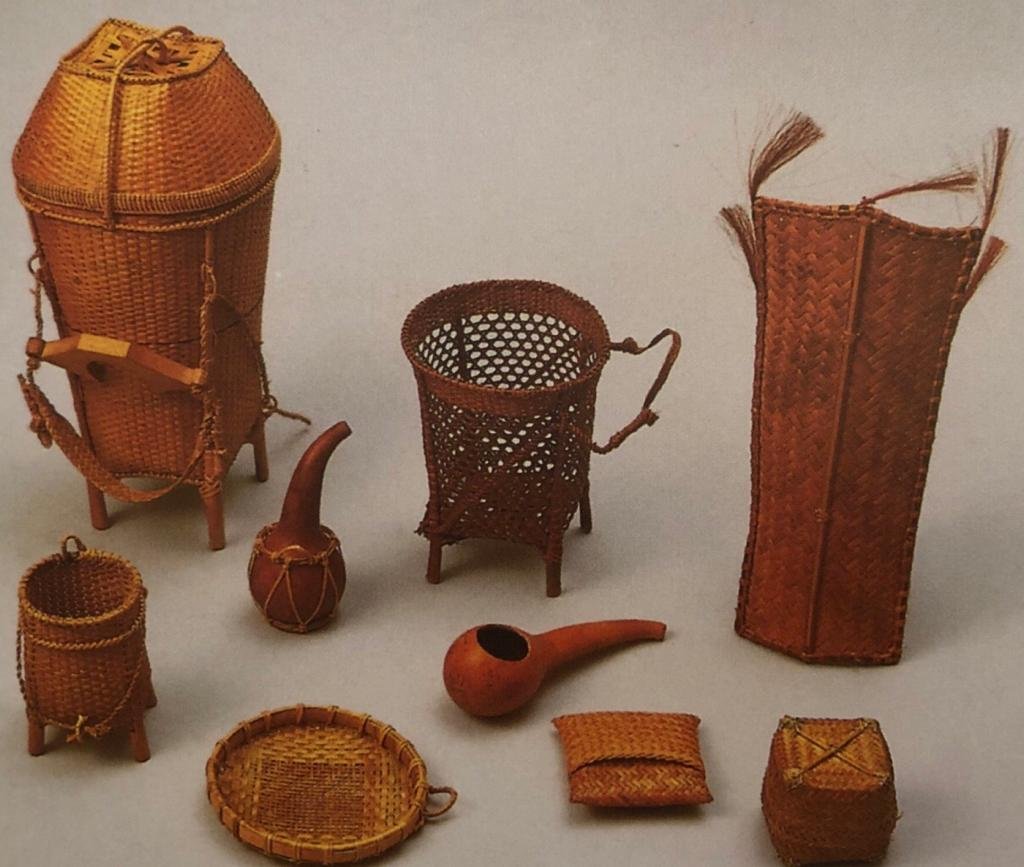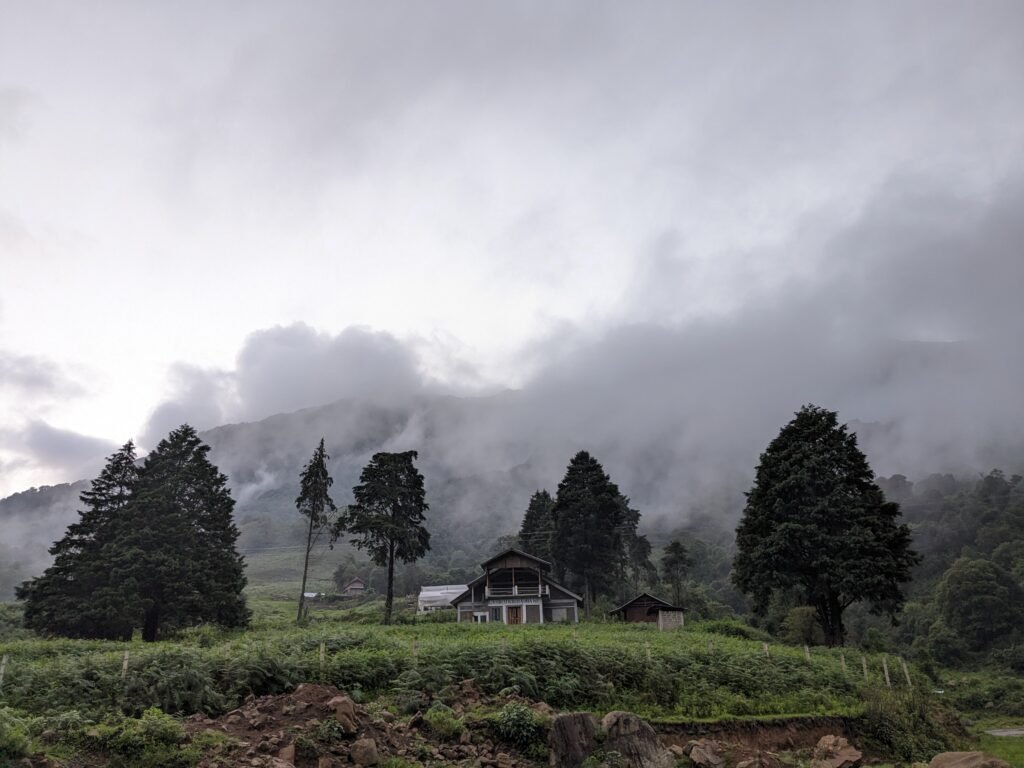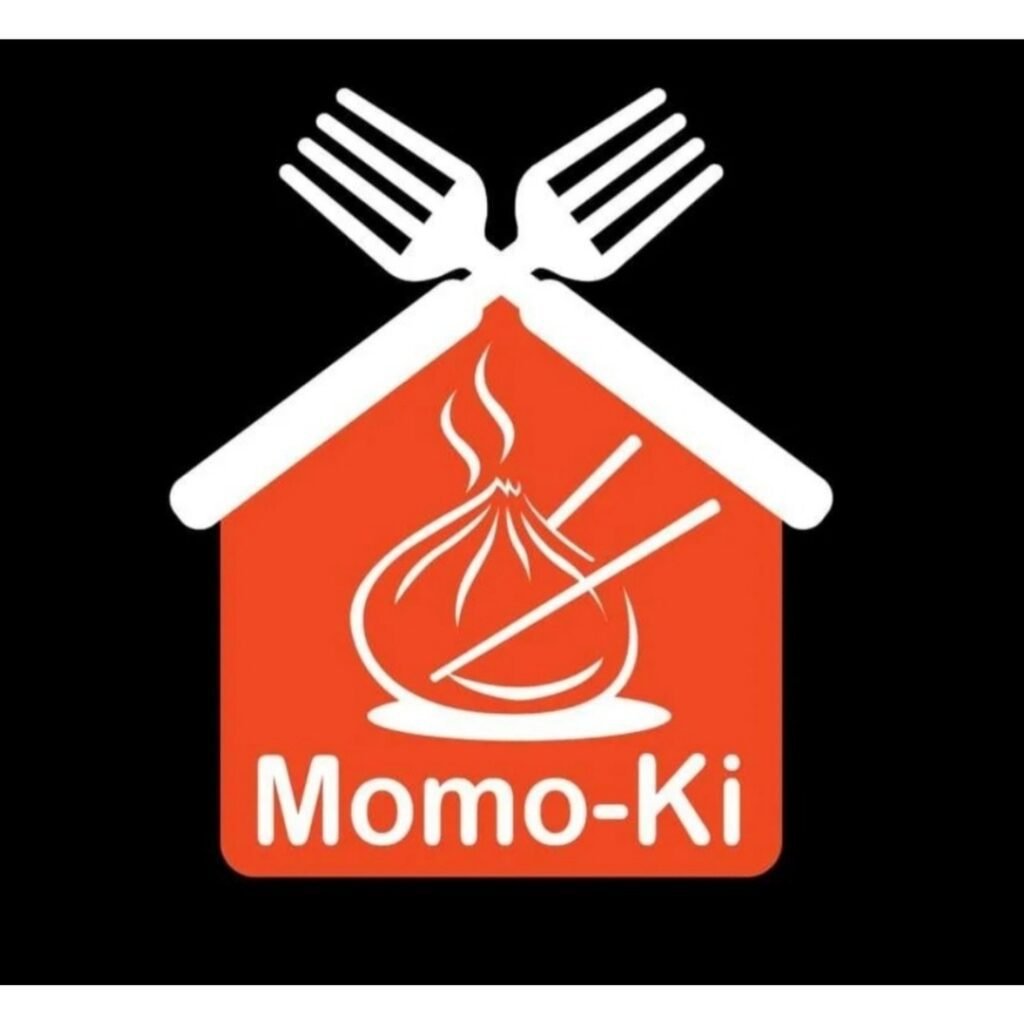Bamboo holds significant importance among the Nagas, an indigenous tribal community living in the northeastern regions of India and northwestern Myanmar. The Nagas have a deep-rooted cultural connection with bamboo, and it plays a vital role in various aspects of their lives. It is not just a material for construction or crafts but a symbol of their cultural identity, sustainable living, and harmonious relationship with nature. The preservation and continuation of bamboo-related practices are essential for the Nagas to uphold their heritage and way of life. Bamboo holds immense cultural and practical significance among the Nagas. The Naga people have a long history of utilizing bamboo as a versatile material for various purposes like construction of houses, tools, crafts, and everyday objects.
House Construction:
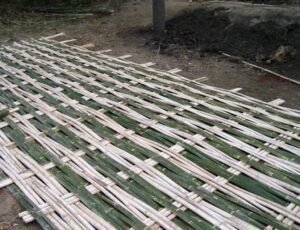
Bamboo is a primary building material for constructing houses and huts. The Naga people have mastered the art of bamboo architecture, using different varieties of bamboo to create sturdy and functional structures. Bamboo houses are well-suited to the local climate and provide shelter for the communities.
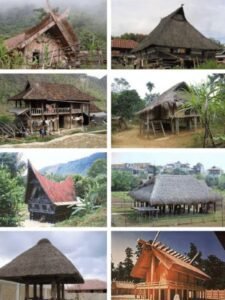
- Bamboo Varieties: The Nagas use different varieties of bamboo for construction, each with its specific characteristics and uses. Some common bamboo species used for building include Bambusa balcooa (known as “Mulah” in the local dialect) and Dendrocalamus giganteus (“Thongja”). These bamboo species are known for their strength and flexibility, making them suitable for structural elements.
- Bamboo Treatment: Before using bamboo for construction, it undergoes a treatment process to enhance its durability and longevity. The most common method involves immersing the bamboo culms in water for several weeks to remove starch and sugars, which reduces the chances of insect infestation and decay. Smoking or curing the bamboo over a fire is also practiced to prevent pests from attacking the bamboo.
- Construction Techniques: The Naga people employ a mix of traditional and modern construction techniques to build bamboo houses. Bamboo culms are used as the main structural framework, with smaller bamboo pieces and natural fibers used to lash them together securely. The thatching for the roof is often made from bamboo leaves or other locally available materials.
- Raised Platforms: Many Naga houses are built on raised platforms to protect them from waterlogging during heavy rains and to provide extra storage space beneath the living area. The raised design also helps to keep the house cool during the hot and humid months.
- Stilt Houses: Some Naga tribes, especially those living in hilly terrains, construct stilt houses. Stilts are used to elevate the house above the ground, providing stability and protection against wildlife and pests.
- Flexibility and Earthquake Resistance: Bamboo’s natural flexibility makes Naga houses more earthquake-resistant compared to rigid structures. The bamboo can sway during tremors without easily breaking, ensuring the safety of the occupants.
- Social and Cultural Significance: Apart from their practicality, bamboo houses hold cultural significance for the Nagas. The construction of a house often involves the entire community, with family members, neighbors, and friends coming together to help with the building process. This fosters a sense of camaraderie and strengthens social bonds within the community.
Furniture and Household Items: Nagas craft furniture and various household items from bamboo. Chairs, tables, baskets, storage containers, and even musical instruments like flutes are made from bamboo, showcasing the community’s creativity and craftsmanship.The Naga people have honed their skills in bamboo craftsmanship, creating functional and aesthetically pleasing objects for their daily use.
- Chairs and Stools: Bamboo is skillfully crafted into chairs and stools that are both sturdy and lightweight. These chairs often have woven bamboo seats and backs, providing comfort while maintaining traditional design aesthetics.
- Tables: Bamboo tables are popular among the Nagas for dining and other household activities. They come in various shapes and sizes, with bamboo strips used for the tabletop and legs.
- Baskets: Basket weaving is a traditional craft among the Nagas, and bamboo is the primary material used for this purpose. Bamboo strips are woven together to create baskets of different sizes and designs, which are used for carrying goods, storage, and even as decorative items.
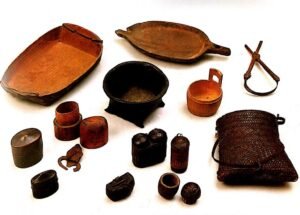
- Storage Containers: Bamboo is used to make various storage containers like boxes and bins. These containers serve as functional pieces of household furniture for keeping clothes, food grains, and other household items.
- Mats and Flooring: Bamboo mats are used as flooring materials in traditional Naga houses. They provide a cool and comfortable surface to sit or sleep on, especially during hot weather.
- Shelves and Racks: Bamboo shelves and racks are used for organizing and displaying household items. They are simple yet effective solutions for keeping things tidy and accessible.
- Kitchen Utensils: Some kitchen utensils are also made from bamboo, including spoons, ladles, and spatulas. Bamboo’s natural properties make it safe to use for cooking without damaging non-stick cookware.
- Room Dividers and Screens: Bamboo room dividers and screens are used to separate different areas within a room or create private spaces in traditional Naga homes.
- Decorative Items: Bamboo’s versatility allows for the creation of various decorative items like wall hangings, photo frames, and figurines. These items often feature intricate designs and patterns, showcasing the artistic prowess of the Naga craftsmen.
Agricultural Tools:
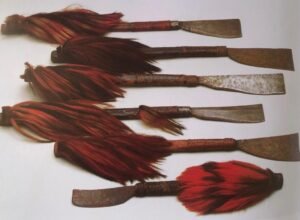
Bamboo is an essential material for crafting various agricultural tools used by the Nagas. Implements like baskets, sickles, hoes, and traps are made from bamboo, enabling them to work efficiently in their fields. The Naga people have been relying on bamboo-based tools for generations to assist them in their agricultural activities.
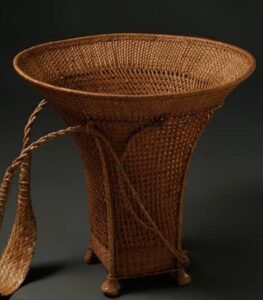
- Baskets: Bamboo baskets are essential tools for farmers in Nagaland. They are used for harvesting crops like vegetables, fruits, and grains. The baskets are lightweight and durable, making them convenient for carrying produce from the fields.
- Sickles: Sickles with bamboo handles are commonly used for cutting crops during harvesting. The sharp, curved blade of the sickle, combined with the lightweight bamboo handle, allows for efficient cutting and ease of use.
- Hoes: Bamboo hoes are used for various tasks in the fields, such as tilling the soil, weeding, and preparing the land for planting. The strong and flexible nature of bamboo makes it suitable for crafting effective hoes.
- Seed Planters: Bamboo seed planters are used to sow seeds in the soil. These simple tools allow farmers to plant seeds at the right depth and spacing, ensuring optimal growth.
- Bamboo Fencing and Stakes: Bamboo is used to create fencing around agricultural fields to protect crops from animals and pests. Bamboo stakes are also utilized to support climbing plants like beans and cucumbers.
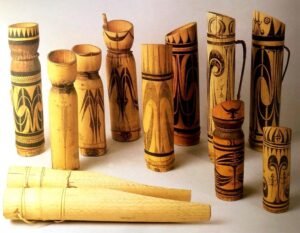
- Watering Cans: Bamboo is sometimes used to make simple watering cans. Farmers use them to water plants and crops, especially during dry spells.
- Traps and Snares: While not exclusive to agriculture, bamboo traps and snares are sometimes used by farmers to catch pests or small animals that can damage crops.
- Storage Containers: Bamboo containers are used for storing agricultural produce like grains and vegetables. These containers help keep the crops safe and dry until they are ready for consumption or sale.
- Bamboo Ladders: Bamboo ladders are used for various agricultural tasks, such as pruning fruit trees or accessing tall plants. They are lightweight and easy to move around the fields.
Weapons and Hunting Tools: In the past, bamboo was used to craft weapons and hunting tools such as spears, bows, and arrows. While modern weapons have replaced traditional bamboo-based tools for hunting and self-defense, the traditional knowledge and craftsmanship are still valued. Before the advent of modern weaponry, bamboo played a crucial role in the construction of weapons and hunting tools among the Nagas of Nagaland. These traditional tools were used for hunting game, self-defense, and even in inter-tribal conflicts. While modernization has led to the adoption of contemporary weapons, the traditional knowledge and craftsmanship of bamboo weapons are still appreciated for their historical and cultural significance.
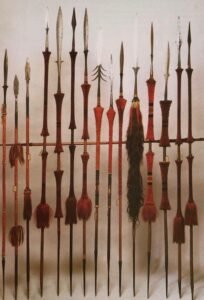
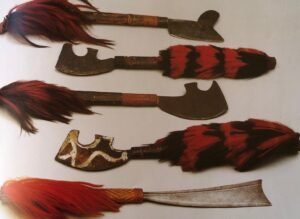
- Spears: Bamboo spears were commonly used for hunting larger animals and as defensive weapons. The bamboo shafts were sharpened and hardened through various methods, making them effective for thrusting or throwing.
- Bows and Arrows: Bamboo bows were crafted to shoot arrows for hunting and warfare. The bamboo used for making bows needed to have specific properties, including flexibility and strength. Bamboo arrows were tipped with metal or sharpened bamboo points for piercing targets.
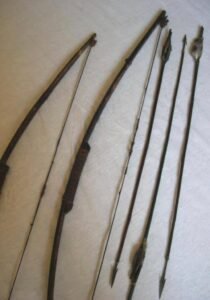
- Blowguns: Bamboo blowguns, also known as “sarens,” were used for hunting small game and birds. The Nagas would craft darts or pellets and blow them through the bamboo tubes with great accuracy.
- Slingshots: Bamboo slingshots were made for hunting birds and other small animals. They were often used by children and skilled hunters who could accurately hit their targets.
- Traps and Snares: Bamboo traps and snares were set up to catch animals for hunting or to protect crops from pests. These traps were often ingeniously designed to capture prey without harming them significantly.
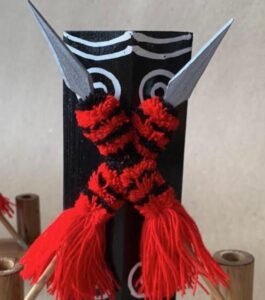
- Shields: Although not offensive weapons, bamboo shields were constructed to provide protection during conflicts. They were lightweight, making it easier for warriors to maneuver while offering some defense against projectiles.
Bamboo as Food: Bamboo is an important source of food among several indigenous communities, including some Naga tribes in Northeast India.It’s important to note that the specific use of bamboo as food and the recipes may vary among different Naga tribes. Each tribe has its own culinary traditions and preparation methods, making Naga cuisine a diverse and fascinating aspect of their culture. Additionally, while bamboo is an essential part of their diet, it is not the sole source of food; the Nagas have a wide variety of dishes made from other ingredients like meat, vegetables, and grains.
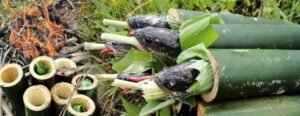
- Bamboo Shoots: Bamboo shoots are a common ingredient in Naga cuisine. The young, tender shoots of certain bamboo species are harvested, sliced, and prepared as a vegetable. The shoots can be cooked in various ways, such as boiling, fermenting, or sun-drying.
- Fermented Bamboo Shoots: Fermentation is a popular method used to preserve bamboo shoots. The shoots are usually fermented with ingredients like salt and chili, which give them a distinct flavor. The fermented bamboo shoots are often used as a seasoning in different dishes and add a unique tangy taste.
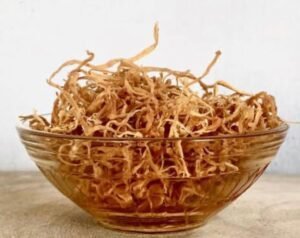
- Smoked Bamboo: In some Naga tribes, bamboo shoots are smoked to preserve them and enhance their flavor. The smoked bamboo shoots can be used in stews, curries, or as a side dish.
- Bamboo Shoots in Curry: Bamboo shoots are often included in Naga curries, adding a delightful taste and texture to the dish. These curries can be made with various ingredients like pork, chicken, or fish.
- Bamboo Rice: Some Naga tribes also use bamboo as a cooking vessel. They stuff bamboo tubes with rice and cook them over an open fire, infusing the rice with the bamboo’s aroma.
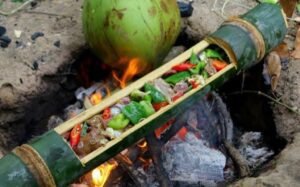
- Bamboo Chutney: Bamboo shoots are sometimes ground into a paste or finely chopped to make chutneys, which are served as condiments with meals.
Musical Instruments: As mentioned earlier, bamboo is used to make various musical instruments like flutes. The Nagas have a rich musical culture, and bamboo instruments play a significant role in their traditional music and dances.
Traditional Festivals and Celebrations: During festivals and celebrations, bamboo is often utilized in the construction of decorative arches, stages, and various other ceremonial structures.
Crafts and Artwork: Bamboo serves as the canvas for the artistic expression of the Nagas. Skilled artisans carve intricate designs and patterns onto bamboo surfaces, creating beautiful artwork and decorative items. Bamboo-based crafts are often a source of income for many Naga families.
Basketry: Nagas are known for their excellent basket-making skills. Bamboo strips are expertly woven to create baskets of different shapes and sizes, used for storage, carrying goods, and sometimes even as offerings during festivals.
